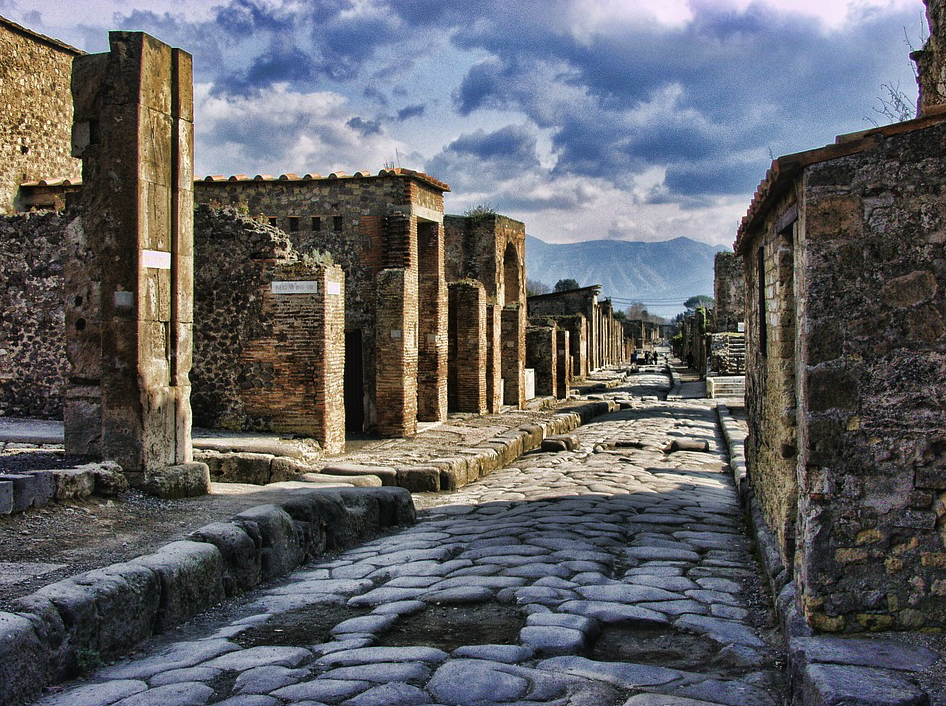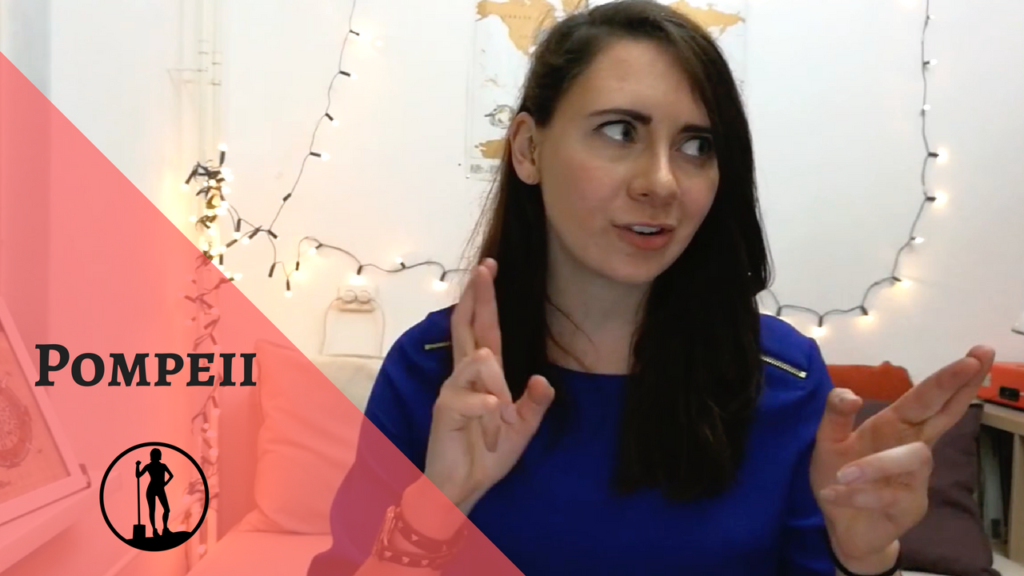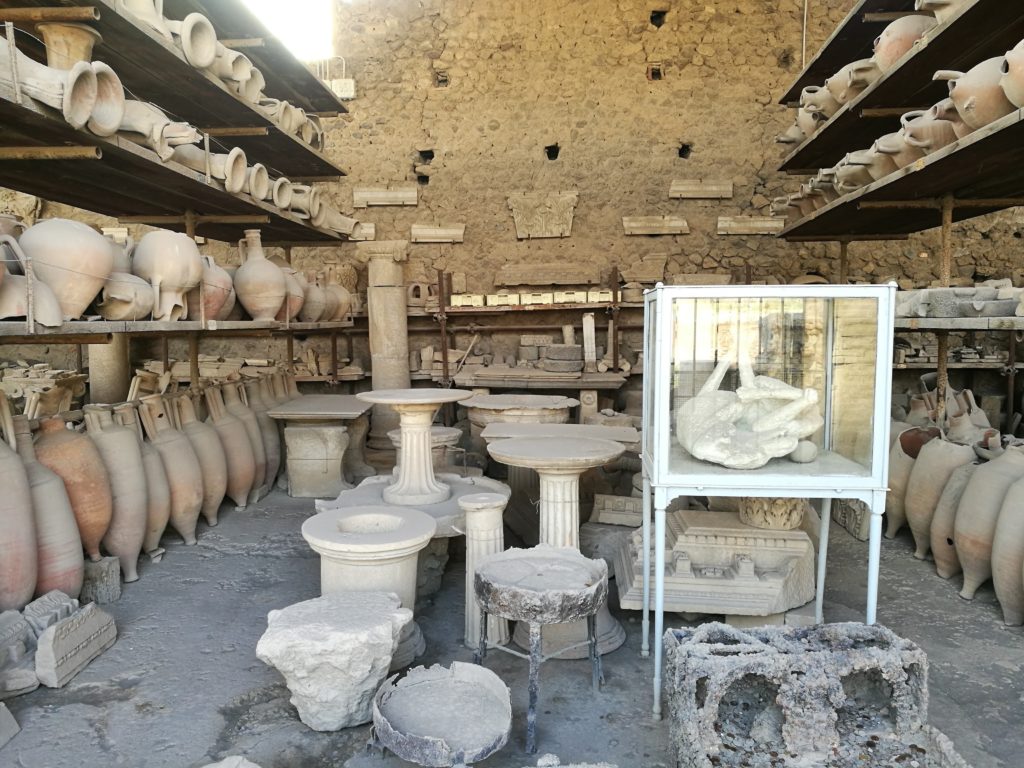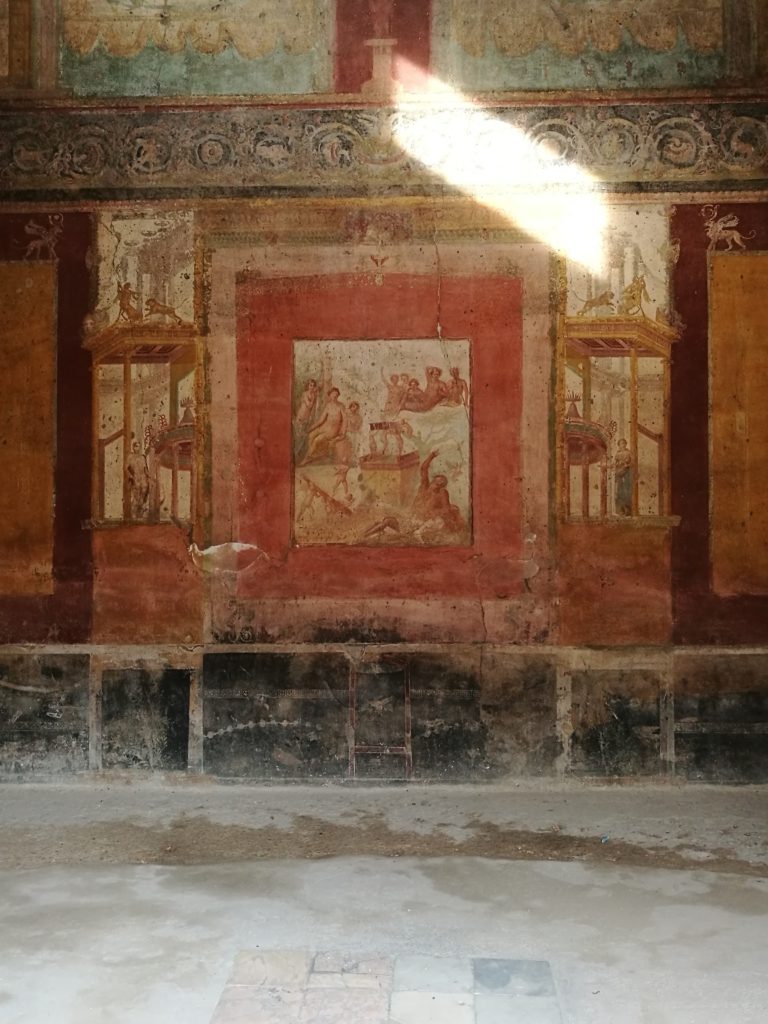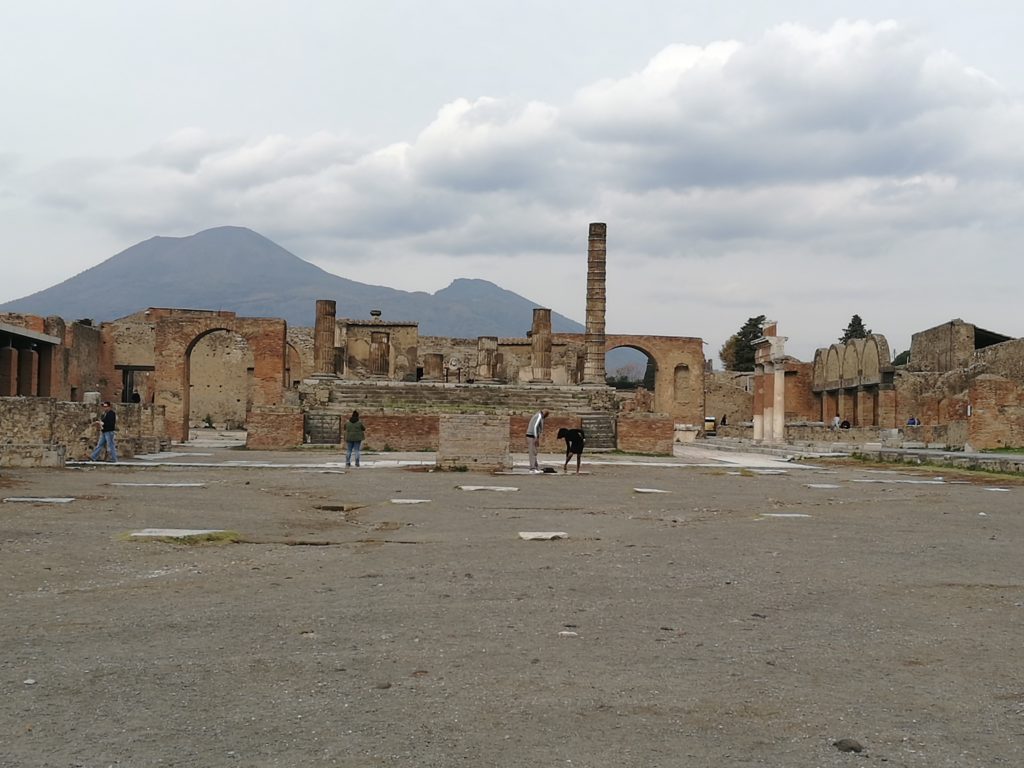Hello again, ancient history-lovers!
Way back in the dark days of February, archaeologist Raven Todd DaSilva came to speak to us about gladiators and the famous thumbs-up gesture that we associate with that ancient blood sport. If you missed that, you can check it out HERE.
I’m thrilled to say that Raven is back on the blog with us this week for a brief introduction to one of the great disasters of the Roman world: the destruction of Pompeii.
Raven visited the archaeological site of Pompeii recently and is here to share a bit of the history with us, as well as some new theories around dating, as well as one of her brilliant videos!
So, ready as ever to get digging and get dirty, here’s Raven Todd DaSilva…
Pompeii, a Brief Introduction
By: Raven Todd DaSilva
On an unassuming day in 79 CE, the long-dormant Mount Vesuvius erupted. For three days, volcanic ash and rock rained down on the surrounding area, completely devastating the settlements around it. Most famously- the city of Pompeii.
Founded in the 6th century BCE along the Sarno river, Pompeii originated as a local settlement in Campania. The rich volcanic soil made it favourable for agricultural activity. In the 5th century BCE, the Samnites entered the area, while the 4th century BCE saw the beginning of Roman influence on the region. Pompeii began to flourish under this regime with massive building projects. It became a major port on the Bay of Naples, leading to its “golden age” in the 2nd century BCE. Pompeii was later turned into a seaside resort in 81 BCE. An earthquake damaged many of the buildings in 62 CE, which led to significant economic decline. By the time of the eruption, many of the grand villas built in the 2nd century BCE were converted for public use, leaving the city frozen in time during a period when its glory days were behind it.
Of course, Pompeii gets its fame from the devastating catastrophe because of the rare view it gives us regarding daily life at that time. As the eruption took the city’s inhabitants by surprise, they were not able to properly pack up and evacuate the area, leaving archaeologists with invaluable evidence as to how people really lived in the first century CE.
Not only are we fortunate enough to have the physical site of Pompeii, we also have a primary document describing the eruption of Vesuvius and the immediate aftermath. Pliny the Younger described the events that happened to his uncle, Pliny the Elder, who died assisting refugees onto the warships he was overseeing. This account is also where the infamous quote “Fortune favours the brave” originated. We also have Pliny’s own personal account from Misenum (about 30km away).
The eruption has been described by Pliny the Younger as:
…a pine tree, for it shot up to a great height in the form of a very tall trunk, which spread itself out at the top into a sort of branches; occasioned, I imagine, either by a sudden gust of air that impelled it, the force of which decreased as it advanced upwards, or the cloud itself being pressed back again by its own weight, expanded in the manner I have mentioned; it appeared sometimes bright and sometimes dark and spotted, according as it was either more or less impregnated with earth and cinders.(Letter LXV – To Cornelius Tacitus)
Once the danger of this eruption was realised, people began to evacuate hurriedly, with many people successfully fleeing. Pliny described those escaping as having “pillows tied upon their heads with napkins; and this was their whole defence against the storm of stones that fell around them” (Letter LXV). The stones thrust from the volcano were deadly, crashing through roofs, collapsing buildings and crushing those trying to take refuge under stairs and in cellars. Others, like Pliny the Elder, choked to death on the air as it filled with ash and noxious sulfurous gas. It is believed that 30,000 people died from the eruption.
The traditional date of the eruption is August 24th, as reported by Pliny the Younger, but it has come under scrutiny as further scientific evidence has come to light. Even as early as 1797, the archaeologist Carlo Maria Rosini questioned the date. Rosini reasoned that, as fruits found preserved at the site, such as chestnuts, pomegranates, figs, raisins and pinecones, become ripe in the fall months, they would not have been ripe so early in August. Another study of the distribution of the wind-blown ash at Pompeii supports this theory further. Probably one of the most telling artefacts is a silver coin found that was struck after September 8th, AD 79. As we don’t have an original copy of Pliny’s manuscript, we can assume a typo had been made along the way.
After compiling all this new data, a new eruption date of October 24th, 79 AD has been suggested.
After the eruption, the city remained largely undisturbed until 1738 when Charles of Bourbon, the King of Naples dispatched a team of labourers to hunt for treasures to give to his queen, Maria Amalia Christine, who was enamoured by previously excavated Roman sculptures in the area of Mount Vesuvius. The city of Herculaneum was found first, with Pompeii excavations following it about ten years later.
Today, Pompeii is one of the most popular and well-known archaeological sites, with the longest continual excavation period in the world. With respect to the study of daily life of Rome, it is undeniably important due to the sheer amount of data available. Each year, thousands of visitors flock to Pompeii to walk along the large stone slabs of its roads, visit its iconic brothels, and marvel at the mosaics, wall paintings and body casts preserved by the volcanic ash.
Raven Todd DaSilva is working on her Master’s in art conservation at the University of Amsterdam. Having studied archaeology and ancient history, she started Dig It With Raven to make archaeology, history and conservation exciting and freely accessible to everyone. You can follow all her adventures on Facebook and Instagram @digitwithraven
Resources
Online Articles:
Kris Hirst, What 250 Years of Excavation Have Taught Us About Pompeii https://www.thoughtco.com/pompeii-archaeology-famous-roman-tragedy-167411
Mark Cartwright, Pompeii https://www.ancient.eu/pompeii/
Joshua Hammer, The Fall and Rise and Fall of Pompeii https://www.smithsonianmag.com/history/fall-rise-fall-pompeii-180955732/
Andrew Wallace-Hadrill, Pompeii: Portents of Disaster http://www.bbc.co.uk/history/ancient/romans/pompeii_portents_01.shtml
James Owens, Pompeii https://www.nationalgeographic.com/archaeology-and-history/archaeology/pompeii/
Wilhelmina Feemster Jashemski, Pompeii https://www.britannica.com/place/Pompeii
The Two Letters Written by Pliny the Younger about the Eruption of Vesuvius in 70 A.D. – http://www.pompeii.org.uk/s.php/tour-the-two-letters-written-by-pliny-the-elder-about-the-eruption-of-vesuvius-in-79-a-d-history-of-pompeii-en-238-s.htm
Books:
Beard, Mary (2008). Pompeii: The Life of a Roman Town. Profile Books. ISBN 978-1-86197-596-6
Butterworth, Alex; Laurence, Ray (2005). Pompeii: The Living City. St. Martin’s Press. ISBN 978-0-312-35585-2
Kraus, Theodor (1975). Pompeii and Herculaneum: The Living Cities of the Dead. H. N. Abrams. ISBN 9780810904187
As ever, I’d like to thank Raven for another fascinating post and video.
Pompeii is one of those topics that I never tire of, and the exciting thing is that more is being revealed all the time. It’s also one site that I have not yet had the chance to visit, so I really enjoyed learning a bit more.
And I’m definitely looking forward to that next collaboration and video, Raven!
If you haven’t already done so, be sure to check the Dig It with Raven website and subscribe to Raven’s YouTube channel so you can stay up-to-date on all the latest videos about archaeology, history and art conservation.
Cheers, and before you leave, here’s a fantastic time lapse video of Raven’s visit to Pompeii!

